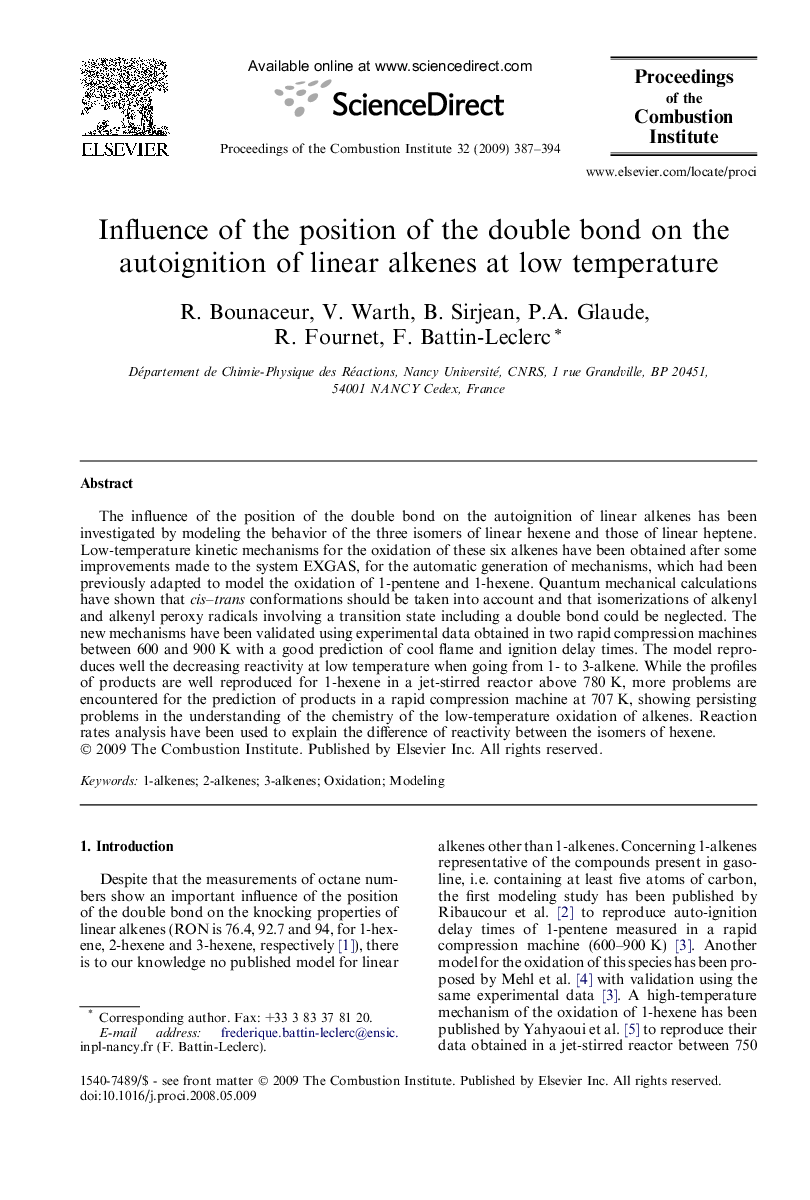| Article ID | Journal | Published Year | Pages | File Type |
|---|---|---|---|---|
| 6679428 | Proceedings of the Combustion Institute | 2009 | 8 Pages |
Abstract
The influence of the position of the double bond on the autoignition of linear alkenes has been investigated by modeling the behavior of the three isomers of linear hexene and those of linear heptene. Low-temperature kinetic mechanisms for the oxidation of these six alkenes have been obtained after some improvements made to the system EXGAS, for the automatic generation of mechanisms, which had been previously adapted to model the oxidation of 1-pentene and 1-hexene. Quantum mechanical calculations have shown that cis-trans conformations should be taken into account and that isomerizations of alkenyl and alkenyl peroxy radicals involving a transition state including a double bond could be neglected. The new mechanisms have been validated using experimental data obtained in two rapid compression machines between 600 and 900Â K with a good prediction of cool flame and ignition delay times. The model reproduces well the decreasing reactivity at low temperature when going from 1- to 3-alkene. While the profiles of products are well reproduced for 1-hexene in a jet-stirred reactor above 780Â K, more problems are encountered for the prediction of products in a rapid compression machine at 707Â K, showing persisting problems in the understanding of the chemistry of the low-temperature oxidation of alkenes. Reaction rates analysis have been used to explain the difference of reactivity between the isomers of hexene.
Related Topics
Physical Sciences and Engineering
Chemical Engineering
Chemical Engineering (General)
Authors
R. Bounaceur, V. Warth, B. Sirjean, P.A. Glaude, R. Fournet, F. Battin-Leclerc,
